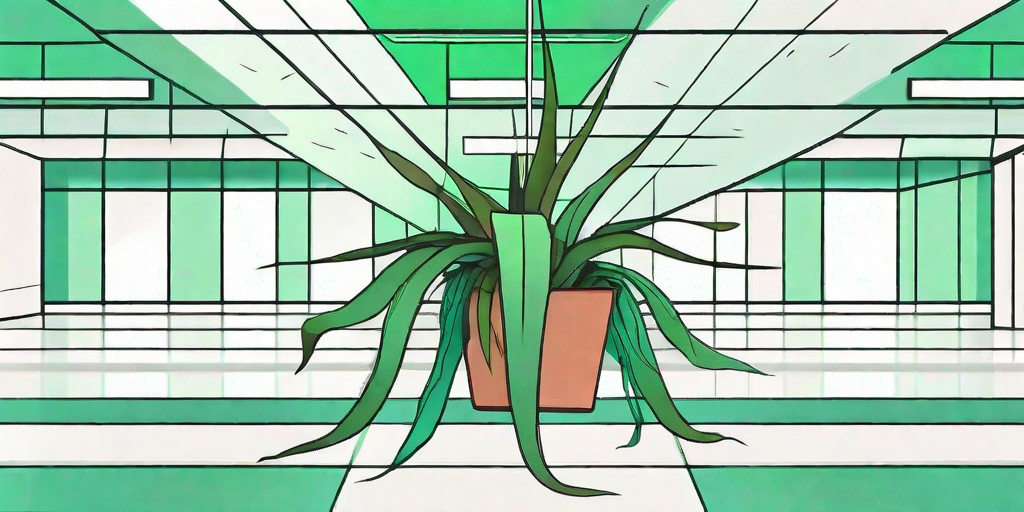
Are you tired of your indoor space looking like a concrete jungle? Do you yearn for a touch of greenery but dread the responsibility that comes with it? Well, we have the perfect solution for you - the Staghorn Fern. This low-maintenance, evergreen beauty is the perfect way to add a dash of nature to your home or office without the hassle of constant care. Let's dive into the world of Staghorn Ferns and discover how you can green up your space with this stunning plant.
Understanding the Staghorn Fern
Before we delve into the care and maintenance of the Staghorn Fern, let's take a moment to appreciate its unique characteristics. The Staghorn Fern, scientifically known as Platycerium, is a genus of about 18 fern species. They are epiphytic plants, meaning they grow on other plants or trees in their natural habitat. But don't worry, they're not parasitic. They just like to hitch a ride!
What sets the Staghorn Fern apart is its unusual, antler-like fronds, which give the plant its common name. These fronds are not just for show; they play a crucial role in the plant's survival. The large, flat basal fronds form a shield around the plant, helping it attach to its host and collect water and nutrients. The fertile, antler-like fronds are where the plant's spores are produced.
The Staghorn Fern's Origin Story
Staghorn Ferns are native to tropical regions in Africa, Australia, and Southeast Asia. They are accustomed to a warm, humid environment, which is why they thrive indoors. However, they can also be grown outdoors in frost-free climates. So, whether you live in a bustling city apartment or a suburban home with a backyard, the Staghorn Fern can find a place in your abode.
Types of Staghorn Ferns
While all Staghorn Ferns share the same basic characteristics, there are several species to choose from, each with its unique features. The most common species is Platycerium bifurcatum, known for its compact size and ease of care. Platycerium grande, on the other hand, is a larger species with impressive, broad fronds. Platycerium veitchii is known for its silvery-grey fronds, while Platycerium andinum boasts the longest fertile fronds among all species.
How to Care for Your Staghorn Fern
Now that we've acquainted ourselves with the Staghorn Fern, let's get down to the nitty-gritty - how to care for this green beauty. Despite its exotic appearance, the Staghorn Fern is surprisingly low-maintenance. Here's a step-by-step guide to keeping your fern happy and healthy.
Lighting and Temperature
Staghorn Ferns love bright, indirect light. A north or east-facing window is ideal. If you're growing your fern outdoors, make sure it's in a shaded spot to protect it from harsh sunlight. As for temperature, Staghorn Ferns prefer a warm, humid environment. Aim for a temperature between 60-80°F (15-27°C). If the air in your home is dry, consider using a humidifier or misting your fern regularly.
Watering and Feeding
When it comes to watering, less is more. Staghorn Ferns don't like to be waterlogged. Water your fern once a week in the summer and once every two weeks in the winter. As for feeding, a balanced liquid fertilizer every month during the growing season should do the trick.
Mounting and Repotting
Staghorn Ferns are epiphytic, which means they prefer to grow on a surface rather than in soil. You can mount your fern on a wooden board or hang it in a basket. If you prefer to pot your fern, use a well-draining potting mix. Repotting should be done every 2-3 years, or when the fern outgrows its container.
FAQs about Staghorn Ferns
Still got questions? Don't worry, we've got answers. Here are some frequently asked questions about Staghorn Ferns.
Why are the leaves on my Staghorn Fern turning brown?
Don't panic! Brown leaves are usually a sign of under-watering or low humidity. Try increasing the frequency of watering or misting your fern more often.
Can I grow a Staghorn Fern from spores?
Yes, you can! However, growing a Staghorn Fern from spores is a slow process and requires a lot of patience. It's easier to propagate the fern by dividing the plant during repotting.
Is the Staghorn Fern toxic to pets?
No, the Staghorn Fern is not toxic to pets. However, it's always a good idea to keep plants out of reach of curious pets.
Conclusion
So there you have it, folks! Everything you need to know about the low-maintenance beauty of a Staghorn Fern. Whether you're a seasoned plant parent or a newbie, this fern is sure to bring a touch of tropical charm to your space. So why wait? Go ahead and green up your space with a Staghorn Fern today!















